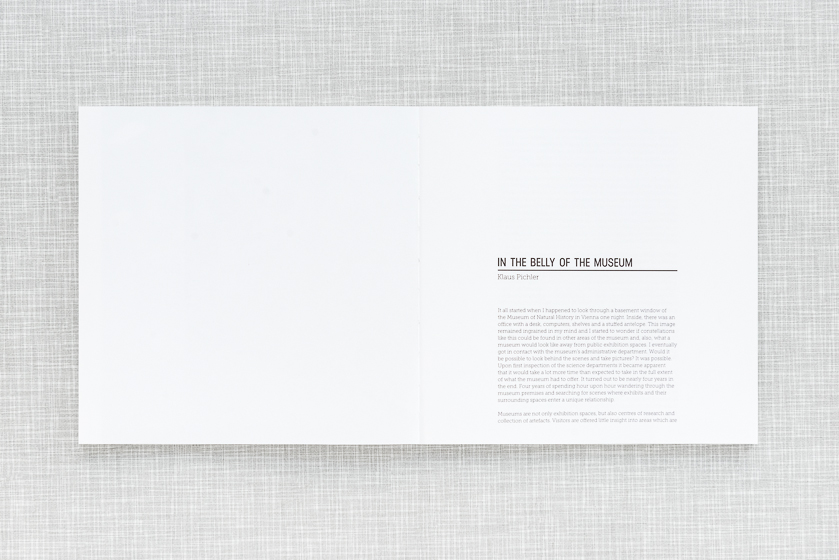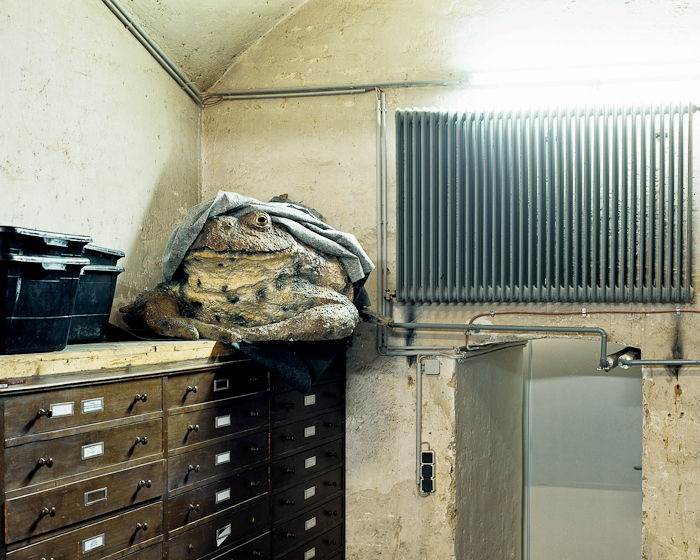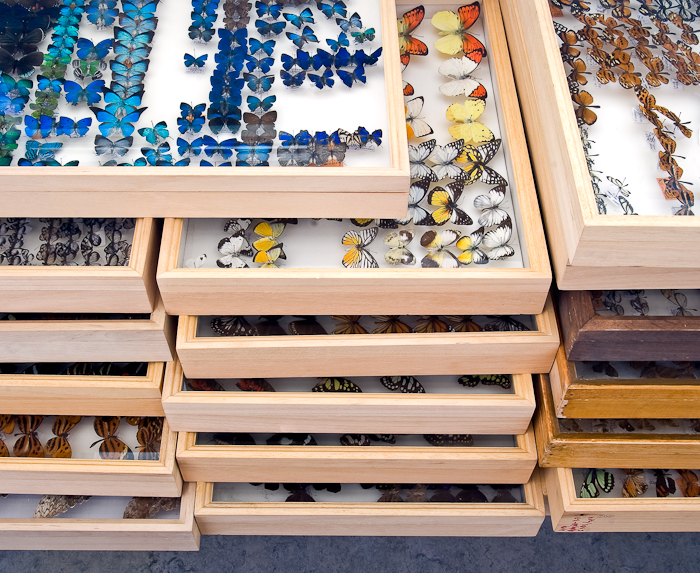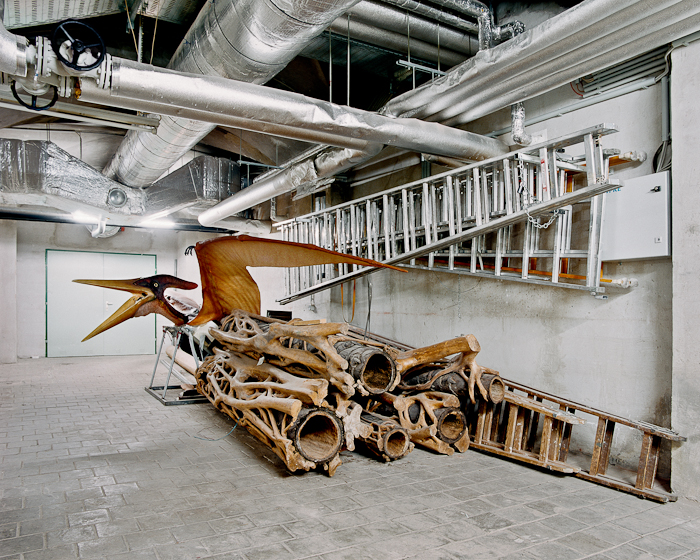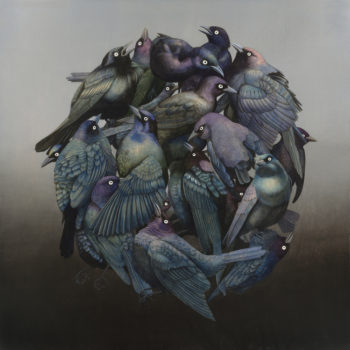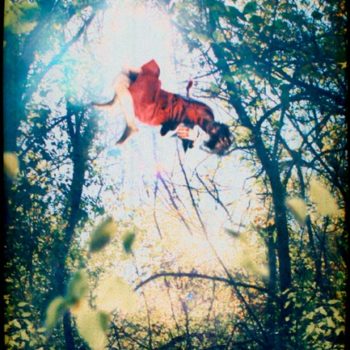I fail to remember how I first came upon the work of Klaus Pichler, but the moment I did, I was completely enamored. His website immediately made it onto the exclusive “links” page of my own portfolio website. I came back to his pictures again and again. I wrote about his images in my final paper for a contemporary photography class. Needless to say, his Skeletons in the Closet series has been a favorite of mine for years. Now, this series exists as a gorgeous book and I elatedly have a copy in my hands. A work of art in itself, the book contains an artist statement and two essays that have had me thinking a hundred exciting thoughts about animals, taxidermy, and natural history museums in photography.
Klaus spent four years photographing in the Museum of Natural History in Vienna, “searching for scenes where exhibits and their surrounding spaces enter a unique relationship.” Over the years, he developed a special relationship with his subjects, learning to “regard them more and more as individuals. Dead but alive nonetheless.” He writes, “Museum spaces are fascinating. Think of childhood memories of visits to exhibitions, think of the film ‘Night at the Museum’ or Noah’s Ark with its doors just opened. Think of something that is equally fascinating and grotesque but still much too real.”
In Klaus’ photographs, animals are brought back to life not as they typically are in natural history museums–seamlessly plopped into a diorama meticulously illustrated to represent their natural habitat–but with absurdity and whimsy, interacting with one another and with their space in ways not possible in life. These scenarios and relationships are arguably more interesting than the dioramas themselves, just upstairs from the storage space that houses them. As Julia Edtofer writes in her essay in the book, insight into a “bizarre ‘living’ environment” is offered by the animal “exhibits” in the basement.
I won’t share too many excerpts from the book, but here are a couple of my favorites:
“If museums are all about categorization and, beyond this, generalized knowledge, why is so much effort involved in the presentation of exhibits? Why is a lion presented ready to pounce, a bear on a platform designed to depict its natural habitat…?” Herbert Justnik, “Respecting Objects” essay
“Is it possible to place animal exhibits into a new context through the medium of photography? Is it possible not to forget the violent logic and history of controlling and ruling over knowledge and still bring them to life?” Julia Edtofer, “Museums as ‘Identity Factories'” essay
The hardbound book includes 63 images and is limited to 750 copies. Order it here.
From “Skeletons in the Closet”
Visit artist's site: kpic.at
Posted August 1st, 2013



